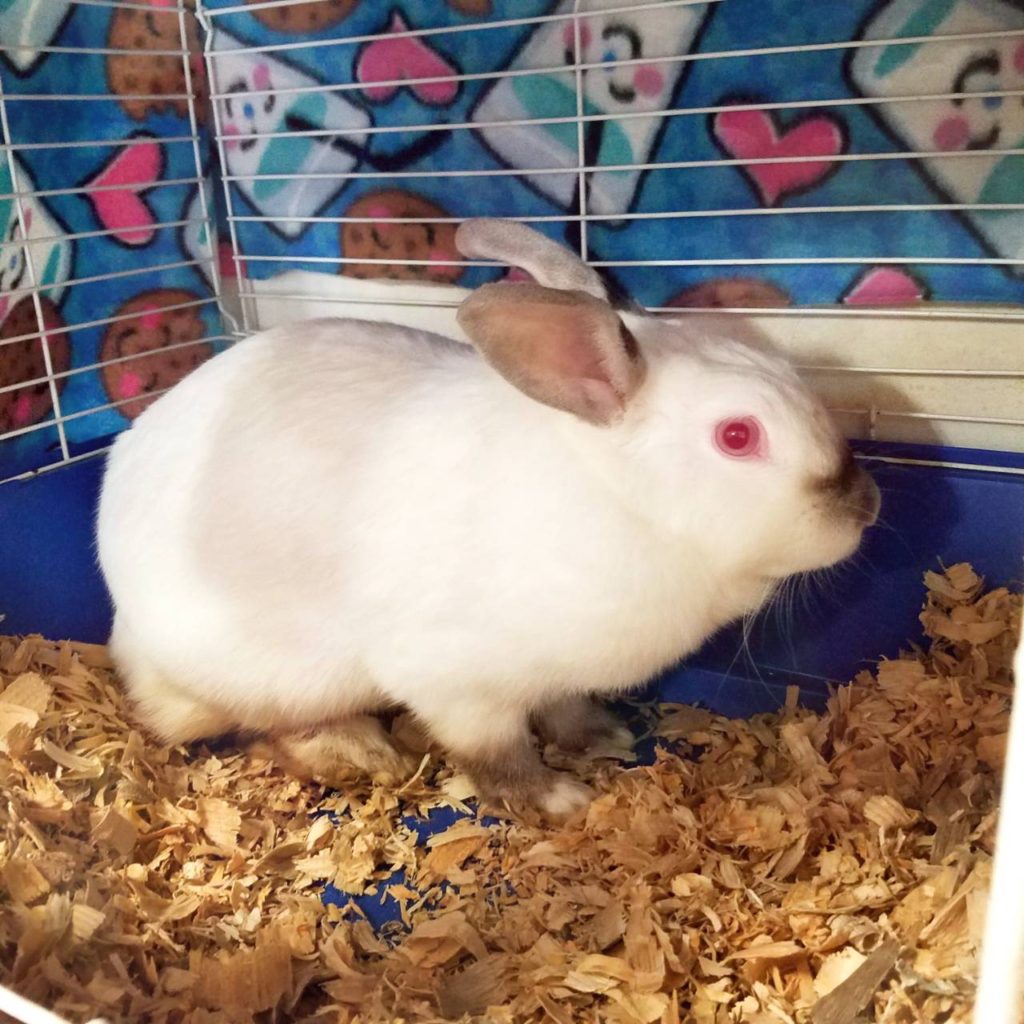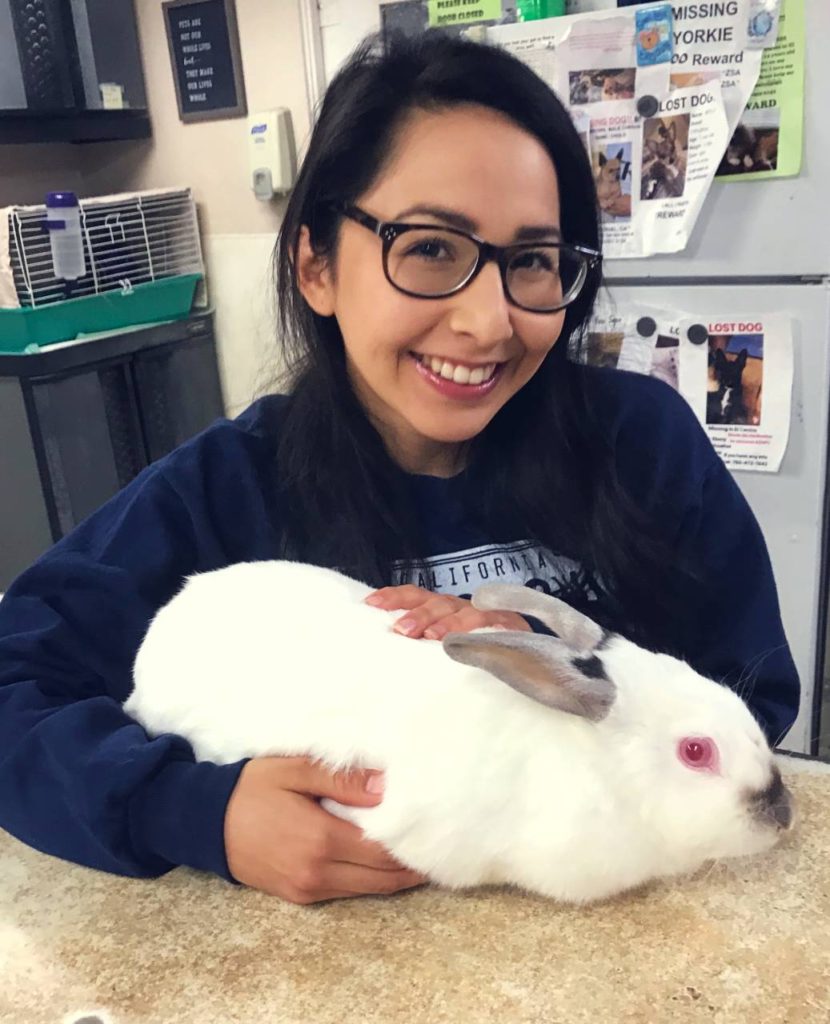This is a different post for me and it was hard to write, for obvious reasons, but I hope it is educational and informative for anyone who owns or handles rabbits.
Today’s post is about how I discovered a rabbit of mine was sick with a parasite called Encephalitozoon cuniculi, or E. cuniculi for short. I’d never heard of it myself so I want to put the information out there for anyone else who has a pet rabbit. As a forewarning, I don’t have pictures of what happened but the story is a weird one.
First, let me give you some background on my history with rabbits.
When I was younger, I had pet rabbits. My mom used to have rabbits when she was younger, too, so that’s pretty much how my family started keeping rabbits. My first one was named Buffy and I had him for about 4 years. In 2011 I got my second rabbit, Twix, who really made a lasting impact on my family and me. We had him for almost 7 years. He was a little fussy but he had a lot of character and we taught him to do tricks (like jump on and off the couch).
So, none of us were ready for another rabbit at the time we had to put Twix down back in 2017. Oddly enough, both him and Buffy suffered similar cases of bone density loss and decreased mobility. During the last approximately 6 months of each of their lives, they weren’t able to function as a normal rabbit should. Of course, we wanted them to live a full and satisfying life and needed to do what was best for their conditions. Anyway, that’s what also made it particularly hard the last time around.
I’d begun to warm up to the idea of getting another rabbit toward the end of 2018 but I had a number of my own plans up in the air that I wasn’t sure I could add a rabbit to that mix. However, I did know that whenever I did get another rabbit, I wanted to adopt. I had gotten my first two at pet shops but, with the knowledge I have now, I know there are rabbit breeders and organizations to help adopt them, just as you can dogs and cats. The trouble was, I hadn’t seen any in my area.
Now, let’s flash-forward to March 2020 when I first adopted a rabbit.
It wasn’t until I saw a posting on the website of my local paper advertising a rabbit up for adoption by the Humane Society that I thought: this is it! I was excited thinking I had finally manifested my dream of adopting a rabbit. It seemed SO timely because here in the U.S. we are under quarantine and have shelter-in-place orders. What better way to enjoy being at home than with a pet??
So, I contacted the Humane Society but received news that the rabbit advertised was just adopted. Although, they explained, there are more options for rabbits at the Humane Society and at foster homes. I decided to go to the shelter to see the rabbit they had there. I honestly wasn’t too picky about how the rabbit looked because all rabbits are cute in their own way. I just wanted to get a feel for her temperament. The rabbit they had was an adult female, probably about 3 years old, and of Californian breed. She seemed intriguing; I considered setting up meet-and-greets with some of the foster rabbit owners, but soon decided that the big beautiful rabbit needed a home and I wanted to provide that for her.

It was a process because the Humane Society wanted to get her spayed before releasing her to me. So I filled out the adoption paperwork and was set to bring her home on Tuesday, March 31st. Cool. But all that weekend leading up to her procedure I had this nervous feeling about it. Like, I was worried something bad was going to happen.
I almost couldn’t believe that I was going to get to bring her home but come Tuesday evening, I did.
I brought her home and had a little space set up for her. I knew I needed to be careful not to handle her for a few days since she was still healing from getting spayed. What was troubling was that she didn’t seem to have an appetite or want to move around much. I’ve never dealt with getting rabbits fixed so I thought perhaps she just needs a little time and, plus, this is a new environment for her.
Truly though, she didn’t mind being pet and she seemed very chill! So, I held hope she would come around as she started to feel better. When she didn’t eat her pellets or hay, I had to intercept by syringe-feeding her this supplement called Critical Care that I got from the vet’s office. The rabbit would fuss a little beforehand but if held securely, she’d start to eat from the syringe. So, this is what I was doing on Tuesday through Friday of that week. It wasn’t until right after her lunchtime feeding that things took a turn.
My mom was assisting me with holding the rabbit while I fed her but when we were done, she turned to put the rabbit back in her space. We were sitting on the floor, ground level, and it looks like the rabbit didn’t get her footing. She stood in a funny position next to her water dish. My mom picked her up to rearrange her but she started kicking wildly. “Put her down!” I shouted. My mom let go of her but the rabbit kept kicking in what initially looked to me like a seizure.
It was the craziest and most saddening thing I’ve ever seen in my entire life.
After seeing that she wasn’t going to be able to stand up properly, my mom quickly scooped her back up and held the rabbit tightly in her arms. Our only guess was maybe she had sprained her leg or hurt her foot and that’s why she wasn’t able to stand and that spiraled her into the seizure-like panic attack. I called the vet’s office where she had gotten spayed and explained what happened, asking if I could bring her in and they said yes, right away. My mom drove while I held onto the rabbit with a towel, firmly holding her body and legs or else she would begin to kick and move.
Again, I thought maybe she had hurt her leg and she didn’t realize what happened. But there I was sitting in the backseat of the car and my rabbit’s body was twisted and one of her eyes was rolling to the side. It was disturbing and I just prayed the vet would know how to help her because what I was seeing did not make sense. She hadn’t shown signs of weakening mobility, balance issues, or anything prior.
We get to the vet’s office and somehow I’m able to transfer her from my arms to the table. I explained what happened to the vet and what we suspected may be the issue. He takes her to get xrays, thinking she may have thrown out her back. Yet, he comes back with the news that there are no injuries. That being said, he believes she has a parasite in her brain.
There is a parasite called E. cuniculi which affects the immune systems of rabbits.
It starts in the kidneys and sometimes they can get rid of it on their own. In mild cases, the parasite can cause the rabbit to lose mobility in its hind legs or suffer from a head tilt. Though, the rabbits can adapt and live, otherwise, happy, healthy lives. The vet said there are medications to treat it but 1) he didn’t have them in stock and 2) they aren’t guaranteed–especially with the state my rabbit was in, which was far past the mild symptoms he described.
In extreme cases, the parasite crosses the blood-brain barrier and forces the rabbits to turn towards one side in a spiraling motion. If I or the vet wasn’t holding my rabbit, she would do exactly that. It was like an endless, frantic spin to one side. The vet said an option was to see if she would come out of it on her own but, again, no guarantees. I didn’t want her to suffer through that because she’d surely injure herself, or give herself a heart attack, if left to just keep spiraling the way her body was forcing her to.
Looking into her eyes and feeling her rapid heartbeat, I felt that she must have been just as confused and frightened about the way her body was contorting as I was. I couldn’t hold her in my arms forever so, unfortunately, the only option was to put her down.

The real question I was asking myself was: why did this happen?
As the vet said, this was a parasite that she must have acquired somewhere. It can lay dormant and not affect the rabbit, sometimes they can fight it off, but it all depends on their immune systems. He said the symptoms can be brought on after a stressful event. “Like getting fixed?” I asked him. While the surgery itself wouldn’t cause this, the rabbit’s immune system could have been in a compromised state post-spay that the parasite now had an advantage over. The vet said sees about three cases a year where rabbits are affected by E. cuniculi but it’s not tied to them getting fixed.
Further research on my own showed me that rabbits are most often affected by it but other animals can acquire and pass along the parasite. The parasite can also be transmitted to humans and is most concerning for individuals who are immune-compromised. It seems that the parasite is spread through urine and high urination levels is a sign that the kidneys have been affected. I didn’t realize it was a problem until then but when I first adopted my rabbit, she was peeing a lot. I thought it was just because she was a big rabbit, so bigger pools of pee.
Since I only had her for three days, it’s hard for me to say what her condition was prior. The Humane Society said she was “fine” when she was there but was she peeing a lot at the time? Was she already losing her appetite? If she hadn’t gotten fixed, is it possible that she had this parasite in her and could have fought it off? Perhaps; but that wasn’t within my power or within my knowledge at the time.
I’m sorry to write a less-than-cheery post but I think this information is important, if only so that you’re aware. Pass it along to anyone who raises rabbits so that they can be informed and look out for the signs. There’s some information online about E. cuniculi and this briefing of a study proved informative for me. The good news is that while many rabbits can contract the parasite, very few actually become disabled or develop the severe symptoms I described. If they are healthy, kept in clean conditions, they should be able to get rid of it and be just fine!
Despite things not working out, I still wanted to adopt a rabbit. Since this incident, I have added a member to my family in the form of a small, Dutch rabbit…so keep a lookout for my next post introducing her!

